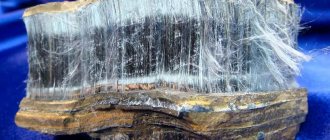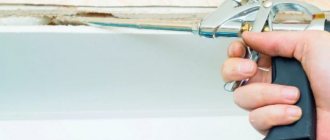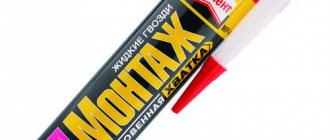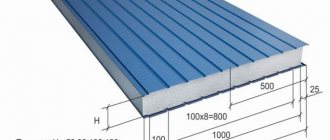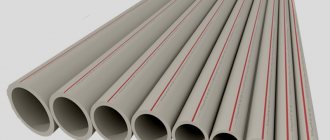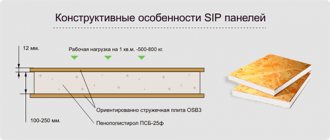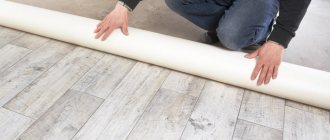Modern construction sites cannot do without the use of polyurethane foam, the technical characteristics of which have played an important role in its widespread use. Professional builders and amateur craftsmen who decided to cope with repair work on their own have recently not imagined installing doors, window sills and windows, as well as construction activities related to waterproofing pipelines and large containers, such as water heating tanks and bathtubs, without the use of polyurethane foam , the technique of using which will be discussed in the article.
Fill a seam, a crack, install a window or door block, glue insulation - for all these works and a dozen others, polyurethane foam is used. If you go to any hardware store, you will see at least a dozen items. And in large or specialized ones there can be hundreds. Which one should you choose? Which polyurethane foam is better? Depends on conditions, tasks and requirements.
What is polyurethane foam and how is it formed?
Polyurethane foam is a foamed polymer that quickly hardens (polymerizes) in air. Release form: metal cylinders of various volumes. The cylinder contains a prepolymer in a liquid state and a propellant gas. Substances called propellant gases are characterized by having a low boiling point. High pressure is created in the cylinder. When the outlet valve opens, the compound is pushed into an area of lower pressure. When released, the propellant gas boils, forming a large number of air bubbles and inflating the foam.
The choice of polyurethane foam depends on the conditions and tasks
Next, in air, the resulting foam polymerizes - it becomes rigid and hard. The curing process requires water, so it is recommended to wet the surfaces before application. Moisture is also taken from the air. Since there is little moisture in frosty air, there are certain compositions for such conditions.
Types of Silicone Sealants
1. Acidic.
The most versatile and cheapest (from two and a half dollars for a 310 ml bottle). As a rule, the labeling contains the Latin letter “A” (“Acid” - acid).
Acidic sealants are not recommended for use on metal surfaces, as the acetic acid released during curing can cause corrosion. Preliminary tests must be carried out on marble and cement materials. Alkaline compounds in their composition can react with acid.
2. Neutral.
When cured, they release ketoximil alcohol, which is safe for metal, cement and marble surfaces. The cost of neutral sealants is higher (from four to five dollars per bottle).
The marking contains the Latin letter “N” (“Neutral” - neutral).
3. Alkaline.
Amine based sealants. They are used very rarely to solve special problems (which the above materials cannot cope with). They are almost never found on sale.
Characteristics
The widespread use of polyurethane foam is, first of all, due to its performance characteristics, which make it possible to consider this material indispensable in almost all types of construction work. The main properties of polyurethane foam, at the same time recognized as its advantages, which every builder could appreciate, are as follows:
- Possibility of use as a sound and heat insulator;
- High resistance to moisture and low electrical conductivity;
- The operational features of some types of polyurethane foam indicate resistance to fire;
- The ability, after expansion, to fill voids and various cracks, ensuring high quality seams and joints;
- Possibility of gluing elements made of various materials using polyurethane foam.
Alternative options
A wide range of materials are used for waterproofing, each of which has its own advantages and disadvantages.
Ruberoid RKP-350 top layer cardboard 15 sq.m. Photo by Leroy Merlin
1) Roll materials have a combined structure, the base is fiberglass or non-woven materials, onto which bitumen, polymer-bitumen mixtures or synthetic substances are applied. They are distinguished by elasticity and good mechanical strength , as well as a convenient release form, which ensures ease of installation. The main advantages are an excellent combination with any coating: metal, wood, glass and plastic, durability, low cost, and tolerates overheating well.
The disadvantages are the need to prepare the working surface, it must be dry and smooth, the need to treat joints with sealant, and lack of resistance to mechanical stress. A classic example of a product in this category is roofing felt, which has high elasticity and hydrophobicity and is used for roof insulation.
2) Membrane waterproofing (membranes). Polymer films are a new generation material that displaces the usual roofing felt from the sphere of insulation of residential and industrial buildings. Self-adhesive films consist of three layers: polyethylene film, bitumen-polymer layer and anti-adhesive layer. They have high mechanical strength and thermal stability , chemical inertness and resistance to microbial activity. As a result, the materials have a long service life. The only drawback is the high cost . There are flat and profiled membranes that are used to protect objects of various configurations.
3) Coating waterproofing takes second place in the popularity ranking after traditional roll materials. This category is represented by mastics and solutions for creating seamless waterproofing coatings. Not suitable for quickly covering large areas. Not as durable and strong as rolled materials, but easy to use . Suitable for working in cramped conditions. They are used for waterproofing foundations, internal waterproofing of basement and bathroom walls, and sealing cracks in walls. There are a lot of disadvantages to this type of product: at subzero temperatures, bitumen loses its elasticity, it is difficult to apply hot mastic, the need to prepare the surface, work must be carried out only in dry weather.
Important! Mastics should only be used when arranging non-residential premises or outside residential buildings, since the heated coating is toxic.
4) Injection waterproofing is represented by low-viscosity liquids that seep through micropores and capillaries: polyurethane gels, epoxy solutions, microcements, acrylates. Liquids contain active substances that, by entering into a chemical reaction with water, concrete components or with each other, form solid products . Moisture is pushed out of the monolith, all cavities in which are filled with a water-repellent mixture. The use of injection waterproofing provides the following advantages : saving time, high quality of protection, the ability to use it in the process of performing local repairs.
Important! Only experienced craftsmen can carry out insulation using injection mixtures; it is necessary to work with the material accurately and quickly, since it thickens in a matter of minutes.
5) Penetrating waterproofing is represented by special compounds, the main task of which is to reduce the capillary conductivity of cement-based materials, which is achieved by penetrating into the monolith active components that react with the lime located there. The product of this interaction is insoluble salt crystals that fill all voids . At the same time, vapor permeability remains at the original level, and the strength of the monolith increases.
The depth of the waterproofing layer can reach 150 mm . The validity period of such insulation is equal to the service life of concrete structures. The disadvantages of penetrating insulation are its narrow focus; it is only suitable for processing screeds and cement-based plaster of grades no lower than M150; work can only be carried out at temperatures above +5 degrees. The compositions are suitable for application inside and outside, designed to protect the foundation and lower floors, and are in demand during the reconstruction of buildings. The mixture is applied to the surface with a brush or sponge in at least two passes.
Reference. Processing of structures that are already in use requires cleaning with a sandblasting tool, since the pores of the concrete become clogged during service.
6) Sprayed waterproofing allows you to obtain a seamless monolithic coating. The spray mixture is a liquid rubber - acrylic, bitumen or polyurethane compositions, applicable for concrete, ceramic, metal, glass and other surfaces. Unique characteristics ensure the demand for sprayed compositions: resistance to wear, tear, fracture and chemicals, anti-corrosion, anti-slip properties of the finished coating. “Liquid rubber” is used for waterproofing roofs, loggias and balconies, foundations and basements, water reservoirs, drainage systems, and water towers.
Foam output
Another thing you need to pay attention to is the foam output. This is the volume that can come out of the cylinder. It is indicated in liters. Typically, the larger the cylinder, the greater the yield. But not always. With the same cylinder size, the difference in output can be about 20-30%. It can be determined by mass. The heavier the cylinder (weight indicated), the greater the yield will be.
As you can see, identical-looking cylinders contain different amounts of foam
What else is worth knowing is that the actual yield of polyurethane foam is usually less than declared (this is more often the case with household types). To ensure the required volume, it is necessary to accurately select the proportions of the prepolymer and filler gas. And not all brands can boast of this. Here is a list of those who consistently produce the declared volumes:
- Soudal (Soudal) professional lines (not household).
- Penosil (Penosil) Gold (Gold) and Premium (Premium).
- Moment Installation (very inexpensive and widespread).
- Wellfoam (WellFom).
- Hilti (Hilti).
- Kim Tec (Kim Tek).
- Den Braven (Den Braven).
- Illbruck (Illbrook).
- Tytan (Titanium) (some batches either do not work at all or produce less than half of what was declared).
There may be other good brands of construction foam. But these are the ones that, according to builders, very rarely fail. When purchasing, look at the production date . After a year, the valve begins to poison, the filler gas comes out, and the output, accordingly, decreases.
In order for good foam to retain its properties, it must be stored correctly.
Note! You need to work with polyurethane foam, which is at room temperature. In cold weather, you need to pre-warm it. Even winter or all-season.
Vote
What would you choose or recommend?
Kraftool Krartflex Premium
0.00 % ( 0 )
Makroflex Standard
0.00 % ( 0 )
MAXFORTE FOAM SOUNDFLEX
20.00 % ( 2 )
Tytan Professional STD
40.00 % ( 4 )
Penosil GoldGun65
0.00 % ( 0 )
Profflex PRO Gold
0.00 % ( 0 )
Irfix STD
0.00 % ( 0 )
Moment Installation
0.00 % ( 0 )
Tytan O2
20.00 % ( 2 )
Soudal Soudafoam
20.00 % ( 2 )
Types of polyurethane foam
What types of polyurethane foam are there?
Manufacturers produce different types of polyurethane foam, which differ in composition, performance characteristics and scope of application.
However, conditionally, foam can be divided into (description of polyurethane foam):
Professional.
Cylinders with such foam are equipped with a special ring valve, which is used to screw the container onto the mounting gun. After the cylinder is secured to the tool, the foam under pressure enters the inside of the gun, where it rests against a valve that is controlled by a trigger. Thanks to the use of a gun, the procedure for applying foam to the work surface is as comfortable and quick as possible. By pressing your finger on the trigger, you can control the pressure and direction.
Household.
The set of such cylinders initially includes a special plastic tube, which allows you to perform the work without using a mounting gun. However, despite its simplicity and availability, in most respects it is significantly inferior to professional foam. In particular, it has a much higher secondary expansion rate and a lower output volume. Quite often, the gas in such cans runs out faster than the prepolymer. In addition, they are considered disposable, so they must be used immediately, since the next day the containers become completely unusable. Thus, it is best to fork out money to buy a mounting gun, which costs within a few hundred rubles.
It is worth noting that it is strictly not recommended to use household foam for critical work, such as installing window and door structures, as well as window sills.
In addition, the composition of the polyurethane foam may differ in its composition:
Single-component – it is familiar and available for general use.
Two-component - this type has a narrow scope of application and is not commercially available. Since to use it you need to mix two different compositions.
Also, depending on the temperature conditions in which polyurethane foam can be used, it can be:
- Summer.
- Winter.
- All-season.
It should be noted that the composition of winter foam differs significantly from its summer counterparts. In particular, it can be used at low air temperatures, down to -20°C inclusive. Naturally, to use it in such frost, care should be taken to ensure that the temperature of the cylinder itself is positive.
In addition, the foam is distributed according to flammability classes and has the appropriate designations:
- B1 – fireproof.
- B2 – self-extinguishing.
- B3 – flammable.
Of course, polyurethane foam, which has increased fire-resistant properties, is considered the best.
Differences between foam and spray insulation for walls
Some manufacturers of polyurethane foam also offer spray-on insulation materials for customers to choose from. Both polyurethane foam and spray insulation are made on the basis of polyurethane foam, are produced in aerosol cans, require protection from UV radiation, can be used for waterproofing, and the use of PPE is required during the work. Those. the materials have some similar parameters . However, other characteristics and properties differ. And this is due to different purposes.
Axton professional mounting foam, 750 ml. Photo by Leroy Merlin
The foam is used for installation, and the insulation is used for thermal insulation. Therefore, it is illogical to compare these materials, and there is no need. It is more expedient to analyze sprayed insulation with other thermal insulation materials : mineral wool, polystyrene foam, penoizol, etc. Polyurethane foam insulation is a combination of two polymer components , namely isocyanate and polyol, as a result of the interaction of which a large amount of carbon dioxide is released, which serves as a foaming agent for the insulation. After hardening, the material forms an insulating layer filled with many cells with carbon dioxide.
Analysis of the indicators demonstrates the superiority of sprayed insulation in accordance with thermal conductivity and water absorption; the use of the compositions does not require a frame; it is possible to regulate the thickness of the layer and insulate complex and hard-to-reach surfaces. Ease and relative speed of application are also important advantages. Thus, PPU insulation is an excellent solution for thermal insulation problems.
Which polyurethane foam to buy based on cylinder size and manufacturer
The amount of polyurethane foam determines how much work can be done “with the participation” of one cylinder. The following options are available in the store:
- 300 ml – foam yield is about 20 liters. This amount is enough to foam the box when installing a regular window 1.2 x 1.5 m;
- 500 ml – foam yield reaches 35 liters. The volume of the cylinder is enough to process a door frame measuring 0.8 x 2 m;
- 750 ml – the foam yield ranges from 40 to 70 liters. This amount of product is required to install approximately two doors or three windows.
As the experience of many users shows, it is better to buy a cylinder a little larger than the required volume, rather than then experience inconvenience due to a lack of product.
Foam yield data is approximate, as it may vary due to storage conditions or conditions of use. The indicator is also influenced by the manufacturer (some cheap brands, even with the maximum volume of the cylinder, offer a foam yield of only 20 liters).
In order not to miss the choice, you should give preference to well-known brands. The following names are especially loved by customers: PROFFLEX, Orion, Soudal, Krimelte, Henkel.
Sometimes you come across cylinders without indicating a specific manufacturer and the only inscription on this topic is “Made in Europe/Russia”. Experts do not recommend purchasing such products, since the polyurethane foam is likely to be of poor quality.
If for some reason you have to buy a product from a cheap and unknown brand, then you should compare its products with a product from a good brand. With the same cylinder size, the weight of the polyurethane foam should be approximately the same: this indicates equal filling of both containers. High-quality repair or construction work cannot be carried out without suitable tools. And polyurethane foam is the very product that needs to be chosen extremely pickily.
What is a non-expanding option?
Non-expanding foam is a kind of sealant, the expansion of which after hardening occurs no more than one and a half times. It is great for working with delicate materials.
There are several types of low expansion foam:
- Silicone - characterized by excellent interaction with most surfaces. Adhere well to smooth materials. The sealed seam, obtained with silicone mass, protects from atmospheric influences and is slightly deformed.
- Polyurethane - standard mounting foams.
- Acrylic - do not contain solvents; this mixture is good for filling small joints. However, acrylic-based compositions are less resistant to aggressive external factors.
For most work related to filling small openings, silicone mass is used. Such sealants are universal, have good elasticity, strength and durability. They do not expand and harden when exposed to a humid environment.
What is one-component polyurethane foam?
Based on their composition, there are two types of polyurethane foam: one-component and two-component. The first one is much more common, and its use is much simpler and more convenient. The one-component foam is packaged in an aerosol package and is essentially a polyurethane sealant. In fact, the substance in the cylinder is a mixture of several substances. The foam base is synthesized from an isocyanate and a polyol, the resulting substance being a prepolymer. The chemical reaction occurs partly inside the cylinder, but mostly on contact with air, resulting in the formation of polyurethane. The foaming agent for any of the polymers will be a mixture of liquefied gases (butane, isobutane, propane), which is called a propellant. Thanks to the same mixture, pressure is created under which the prepolymer leaves the container.
When leaving the container, the composition turns into foam due to contact with air and increases in volume by 20-40 times. Thanks to its rapid expansion, this foam can fill even the most difficult to reach cavities. Over a short period of time, the mass hardens due to the moisture contained in the air. To increase the speed of hardening, you can also moisten the surface on which the composition will be applied. It takes about a day for the composition to complete the chemical reaction - during this time the foam hardens, turning into a chemically stable polyurethane. The great advantage of this substance is its strength, resistance to wet environments, and harmlessness. Due to its porous structure, polyurethane is an excellent insulator.
You can use polyurethane foam when working with almost any building material: concrete, stone, iron, wood, plastic. This allows it to be used in the widest range of construction and installation works: installation of windows and doors, heat and sound insulation, sealing of joints, cracks, and drainage systems, as well as, if necessary, sealing of individual elements.
There are now many manufacturers of polyurethane foam on the market, but it is better to give preference to well-known brands. Among them:
- Henkel (Makroflex brand, Finland)
- Bison International (Netherlands)
- Den Braven (Netherlands)
- Soudal (Belgium) international concern Tremco lllbruck
- Selena Group (trademarks Tytan, Hauser, Poland)
- Bau Master (Estonia)
- Domos (Estonia)
- Okyanus Kimya (trademark Soma Fix, Türkiye)
- "Germetic-Trade" (trademarks "Master Gvozd", CHIP, Putech, Russia)
Please note that high-quality polyurethane foam, when applied, is immediately fixed to the surface and does not flow down it. Another indicator of quality is strength: even when exposed to low temperatures, high-quality polyurethane foam does not break or crumble.
Top 10 best polyurethane foams
| Photo | Name | Rating | Price | |
| #1 | Kraftool Krartflex Premium | ⭐ 4.95 / 5 | Find out the price | |
| #2 | Makroflex Standard | ⭐ 4.9 / 5 | Find out the price | |
| #3 | MAXFORTE FOAM SOUNDFLEX | ⭐ 4.85 / 5 2 - votes | Find out the price | |
| #4 | Tytan Professional STD | ⭐ 4.85 / 5 4 - votes | Find out the price | |
| #5 | Penosil GoldGun65 | ⭐ 4.8 / 5 | Find out the price | |
| #6 | Profflex PRO Gold | ⭐ 4.75 / 5 | Find out the price | |
| #7 | Irfix STD | ⭐ 4.7 / 5 | Find out the price | |
| #8 | Moment Installation | ⭐ 4.65 / 5 | Find out the price | |
| #9 | Tytan O2 | ⭐ 4.6 / 5 2 - votes | Find out the price | |
| #10 | Soudal Soudafoam | ⭐ 4.55 / 5 2 - votes | Find out the price | |
| #11 | TechnoNIKOL 65 Constant | ⭐ 4.5 / 5 | Find out the price |
What would you choose or recommend?
Take the survey
No. 1 – Kraftool Krartflex Premium
Kraftool Krartflex Premium
One of the highest quality foams on the market - both beginners in the world of repair and construction and experienced craftsmen consider it so. This foam is created from polyurethane and contains a number of additives that allow it to have high technical characteristics. It is a professional type, considered fire-resistant and can be used when installing fire-rated windows and doors. It must be used in conjunction with a pistol. The foam is suitable for use all year round, suitable for work both inside and outside. Economical in consumption - from a 750 ml bottle you get about 45 liters of finished foam. Perfectly insulates the room from cold and excess noise, hardens to operational condition within 12 hours. And the unused composition can be stored for a very long time, since the cylinder is equipped with a special valve.
pros
- professional foam
- You can even store an open cylinder
- economical
- fireproof
- Suitable for indoor and outdoor use all year round
Minuses
- not detected
Prices for Kraftool Krartflex Premium polyurethane foam
foam Kraftool Krartflex Premium
No. 2 – Makroflex Standard
Makroflex Standart
This is one of the most popular foams, which is bought by both craftsmen and ordinary people planning some kind of work. And therefore it is available in almost every store. It is often used for sealing seams and joints, insulating various surfaces - for example, in a garage or barn. The material has excellent adhesion and easily sticks to a variety of surfaces, creating a uniform layer. One of the advantages is the absence of so-called secondary expansion. Foam has an affordable price, but at the same time high technical characteristics, which explains its popularity. However, because of this, there is a high risk of running into a fake when purchasing. And one more minus - after drying, the material may shrink. But the foam is not afraid of thermal fluctuations.
pros
- universal material
- high adhesion
- no secondary extension
- not afraid of temperature changes
- very popular
Minuses
- shrinkage possible
- there is a risk of buying a fake
Prices for Makroflex Standart polyurethane foam
foam Makroflex Standard
No. 3 – MAXFORTE FOAM SOUNDFLEX
MAXFORTE FOAM SOUNDFLEX
MAXFORTE SoundFlex is a new generation of elastic mounting foam (Acoustic foam in cylinders), specially designed for sound insulation. The product is characterized by high density and low expansion. SoundFlex foam has high elasticity, the ability to stretch and restore its original shape after compression. Thanks to all this, excellent vibroacoustic properties are ensured! The product provides a significant reduction in vibration load between building structures, acting as a damping layer.
MAXFORTE SoundFlex foam is designed for reliable sound insulation of window and door installation seams, elastic filling of expansion joints of building structures (in particular gaps between partitions and ceilings), cracks and voids.
MAXFORTE SoundFlex foam is designed for reliable sound insulation
Application area:
- installation of windows of all types: PVC, wooden, aluminum (especially large and non-standard designs) with high requirements for sound and thermal insulation
- filling the assembly seam of door frames
- durable elastic filling of cracks, voids, pipe openings and risers
- sound insulation and sealing of partitions and walls, as well as joints in building elements with large movements
pros
- the foam takes its original shape even with significant compression (up to 75%)
- increased elasticity without damaging the structure
- low expansion ensures high product density
- polyurethane foam with very high adhesion to building materials: concrete, wood, metals and artificial surfaces, including at extremely low temperatures (down to -10°C)
- excellent vibroacoustic properties: vibration reduction up to 90%
- sound insulation of seams 65 dB (10 mm seam)
- volumetric output (20 x 50 mm) approx. 30±2 l.m.
- air permeability ≤600 PA
- application temperature from -10°C to +35°C
- contains a flame retardant. Building material class E (B2), does not support fire
- low thermal conductivity provides high thermal insulation (0.035 W/mK)
Minuses
- not detected
Installation technology
- Before use, all surfaces must be degreased, cleaned of dust and dirt. To achieve optimal foam structure and reduce polymerization time, it is recommended to slightly moisten the surfaces with water from a spray bottle.
- The SoundFlex foam canister should be at room temperature. Shake the can thoroughly for 20 seconds and then screw on the mounting gun. Due to the high density of MaxForte SoundFLEX foam, some cheap brands of foam guns are not suitable for it. We recommend using a high pressure foam canister gun.
- Holding the balloon with the valve down, we partially fill the seam from the bottom up (about 50-70% of the volume), leaving space for the foam to expand. After complete polymerization, excess foam is removed mechanically with a knife.
- Upon completion of work, tighten the dosing valve on the gun.
Note! Dried foam must be protected from exposure to UV radiation (sun rays): painted, coated with silicone sealant or plastered.
No. 4 – Tytan Professional STD
Tytan Professional STD
Foam, which has a convenient applicator for use. It does an excellent job of sealing any seams and joints, insulating surfaces, and fills all free space well. Due to the convenient tube, it is easy to use, allows you to accurately apply the composition, and the container itself can be used repeatedly. The main thing is to keep it within two months. Afterwards you will need a gun and cleaner. The foam is non-toxic and not dangerous to humans, and therefore safe to use. This is a fire-resistant composition, it is not afraid of exposure to moisture and, in addition, does not provoke the appearance of mold.
pros
- finely porous after hardening
- convenient applicator for application
- safe composition
- resistant to mold
- fire-resistant
Minuses
- no obvious ones found
Prices for Tytan Professional STD polyurethane foam
foam Tytan Professional STD
Reviews of Tytan Professional STD polyurethane foam
No. 5 – Penosil GoldGun65
Penosil GoldGun65
This composition is preferred by professionals. They say that this foam has an almost ideal quality-to-cost ratio, is not prone to shrinkage, and performs well once cured. The composition is produced in Estonia and meets all European quality requirements. Moreover, the frozen foam practically does not change color over time, remaining white. Its volume yield is one of the very highest. The only downside of the composition is that it does not like extremely low temperatures and is not very suitable for use in harsh regions. The foam simply does not come out of the container.
pros
- good value for money
- good volume yield
- doesn't shrink
- secondary expansion is minimal
- made in Estonia
Minuses
- does not like very low temperatures
Prices for polyurethane foam Penosil GoldGun65
foam Penosil GoldGun65
No. 6 – Profflex PRO Gold
Profflex PRO Gold
A very high performance polyurethane foam that is valued and respected by most professional builders. It allows you to get up to 65 liters of substance from one cylinder. Used when installing windows and doors. Permissible operating temperature conditions are from +5 to +35 degrees. The foam hardens evenly, creating a durable thermal and sound insulating layer. By the way, it hardens very quickly - within a couple of hours after filling the voids, a dense and durable connection is formed. This is a foam that is safe for health and has the appropriate certificates.
pros
- economical consumption
- big exit
- Well insulates sound and heat energy
- creates a strong connection
- hardens quickly
- stable in behavior
Minuses
- not detected
Prices for Profflex PRO Gold polyurethane foam
Profflex PRO Gold foam
No. 7 - Irfix STD
Irfix STD
This is a winter version of professional polyurethane foam that can be used at temperatures ranging from -10 to +30 degrees. A composition with excellent yield (750 ml = 60 l of foam), with an excellent level of adhesion and high resistance to various influences after hardening. The finished foam is not afraid of either thermal changes or mechanical damage, and does not age for a very long time. If desired, it can be painted well. The composition has a fairly reasonable price. And yes, it has excellent thermal and sound insulation.
pros
- low price
- easy to paint
- winter option
- good way out
- creates strong seams
Minuses
- doesn't like UV rays
Prices for Irfix STD polyurethane foam
Irfix STD foam
No. 8 - Moment Installation
Moment Installation
This is probably one of the cheapest and most profitable foam options for many, which is why it is in great demand. Moment Installation is so common that it is not difficult to find it even in remote regions. This is a dense and homogeneous composition that forms a uniform and neat foam after hardening. The material adheres well to different surfaces, insulates sound well and retains heat. Moreover, the composition is not dangerous to human health after hardening, since it does not emit any toxic substances. The foam is available in two forms - for use with or without a gun. The original foam has good quality at an affordable price. However, the market is full of fakes, and you need to be very careful not to buy them. Otherwise, a poor-quality composition may even damage the foamed structures.
pros
- profitable price
- very common
- homogeneous foam
- Insulates sound and heat well
- not dangerous to humans
- high adhesion
Minuses
- a lot of fakes
Prices for polyurethane foam Moment Installation
polyurethane foam Moment Installation
Reviews of polyurethane foam Moment Installation
No. 9 - Tytan O2
Tytan O2
This is a foam specifically for northern conditions and is considered “winter”. Has excellent adhesion to various materials even in the cold season. It does not shrink after hardening and has a fine structure with high density. In short, the composition has very good quality at a fairly low price. Also, the advantages of foam include safety for human health. The composition can be recommended for use in apartments, when installing windows in new buildings. The main disadvantage is that the foam does not tolerate ultraviolet radiation and quickly loses its properties when exposed to direct UV rays. After application, it is important to cover it from the sun.
pros
- fine porous structure
- can work in cold weather
- high level of adhesion
- no shrinkage
- nice price
Minuses
- cannot tolerate ultraviolet radiation
Prices for Tytan O2 polyurethane foam
polyurethane foam Tytan O2
No. 10 – Soudal Soudafoam
Soudal Soudafoam
This is a foam from Belgium. A big plus of any foam from this brand is the very modest secondary expansion. And the frozen composition is finely porous and very dense, ensuring reliable sealing of joints and seams. She has no shrinkage. However, the foam does not like the effects of UV rays, so after hardening it must be carefully covered. The manufacturer’s assortment includes a lot of options, including fire-resistant ones, which are suitable for chimneys, stoves, roofing in the chimney area, hot water pipes, etc. This option is quite capable of withstanding heating up to 360 degrees without losing its properties.
pros
- There is a fire-resistant version
- finely porous after hardening
- does not shrink
- slight secondary expansion
- dense composition
Minuses
- doesn't like UV rays
Prices for mounting foam Soudal Soudafoam
mounting foam Soudal Soudafoam
No. 11 – TechnoNIKOL 65 Constant
TechnoNIKOL 65 Constant
This is a strong competitor to many foreign options for polyurethane foam. Produced in Russia by one of the most famous companies in the construction industry. Polyurethane-based foam, universal, gives excellent yield, has excellent adhesion, expands moderately, does not shrink after hardening. As for secondary expansion, it is within the acceptable limits. The material is often used when installing doors and windows, as well as when insulating plumbing fixtures. The main disadvantage is that it is not easy to buy foam; it is not sold everywhere.
pros
- universal option
- high adhesion
- no shrinkage
- good way out
- moderate expansion
Minuses
- difficult to buy
Prices for TechnoNIKOL 65 Constant polyurethane foam
Polyurethane foam TechnoNIKOL 65 Constant
Pros and cons of polyurethane foam
Let's talk about the advantages of polyurethane foam :
+ Polyurethane foam is used as a heat and sound insulator;
+ Foam is a binding material that glues together elements of different materials;
+ Polyurethane foam does not conduct electric current and is resistant to moisture;
+ Some types of polyurethane foam are resistant to fire (B1 - fire-fighting foam, B2 - self-extinguishing foam, B3 - flammable);
+ As the polyurethane foam expands, it fills all the cracks and voids, resulting in a very high-quality seam.
Well, the disadvantages of polyurethane foam are as follows:
— When ultraviolet rays hit the foam, it begins to darken and collapse, so the foam must be protected from the sun by puttingty;
— Foam cylinders must be kept away from high temperatures, otherwise, due to the high pressure in the cylinder, this cylinder will simply explode and everything that was next to this cylinder will become unusable;
— If the foam gets on the skin, it can only be washed off with a solvent, and only if the foam has not yet hardened. Frozen foam on the skin can only be removed with a piece of pumice and after thoroughly steaming the skin.
When to use it
This substance is used when a fire occurs in warehouses where fuels and lubricants are stored, industrial enterprises, storage facilities for oil and its components, and in transport. Class A fires are primarily extinguished with foam.
Due to the fact that foam is much lighter than flammable liquids, it does not mix with them, but spreads over their surface. Thanks to this, the fire site is quickly extinguished. The foam ideally quickly spreads over the surface, covering the ignited area. It settles slowly, which prevents oxygen from reaching the open fire. Moreover, the settling rate is directly influenced by the foam composition, that is, the substance used to make foam.
How to use polyurethane foam?
Before working with polyurethane foam, you should put gloves on your hands, since washing the polyurethane foam is problematic (this was written above). So, we put on gloves, took a bottle of foam, removed the cap and screwed a gun onto it, if it was professional foam, if it was semi-professional, put an adapter tube on the bottle. Only after this is it necessary to shake the container for 0.5-1 minute so that the foam is well mixed inside the container; if this is not done, then resin will come out of the container, not foam.
Before foaming, you should moisten the gap to be treated with water to quickly set the polyurethane foam. Then we start foaming. The cylinder should be kept upside down so that the gas in the cylinder displaces the foam from the cylinder, otherwise all the gas will come out of the cylinder, and the foam will remain in the cylinder.
Cracks no larger than 5 cm in width should be foamed; if the gap is larger than 5 cm, then polystyrene must be used in order to save mounting foam and prevent excessive expansion of the foam, which can cause deformation of the structure, window sill or door frame.
Foaming should be done from the bottom up, filling 1/3 of the depth of the crack, since the foam will expand when setting and fill the entire depth of the crack. If work is carried out at sub-zero temperatures, winter foam should be heated in a bucket of warm water before work; the water temperature should be about +30-40°C.
After foaming the gap, spray the foam with water to speed up the setting of the polyurethane foam. At sub-zero temperatures, of course, you should not spray the foam with water; water will not have the same effect of accelerating the setting of the foam as at positive temperatures, it will simply freeze.
If foam accidentally gets on the structure of a window or door, or foam falls on the floor or furniture, then immediately take a rag soaked in solvent and wash the foam, otherwise the foam will harden and stick well to the surface. Washing the foam without damaging the surface of the door, window or furniture will be very problematic.
After 30 minutes, the foam will be ready for cutting off excess and plastering. It is very convenient to cut off the foam using a wood saw or a construction knife. Complete setting of the polyurethane foam occurs after 8 hours.
That's all you need to know when working with polyurethane foam.
The problem of choice and secrets of use
Coming to a building materials store, any non-professional will be confused: the market offers the buyer polyurethane foams with a significant variation in both price and quality. How to make a choice?
First of all, you need to know for what kind of work the foam will be used. It is preferable to fill narrow spaces with foam without too significant expansion; for wide cavities, strength will be important, without which it is impossible to hold the structure. In the second case, however, you can use a trick and fill the space with wood, brick or crushed stone, and only then use foam with a slight expansion.
The shelf life of the product is also important. It rarely exceeds 18 months. An expired product will most likely not have the declared properties. The “older” the cylinder, the more viscous the composition is inside it. This can be used if dense foam with small cells is more suitable for your needs. In any case, an expired cylinder should not only be used, but also stored at home; It is better to dispose of them at special collection points for such containers. It is strictly forbidden to throw cylinders, even fully used ones, into fire.
Over time, the composition may “disperse”: heavier components will sink to the bottom of the cylinder, while lighter components will rise. To ensure that the foam is homogeneous, shake the can for about 30 seconds before use: then the components will mix again, and the resulting composition will be exactly as the manufacturers intended. It is also worth shaking the container periodically during operation, but in this case you should not reach the point of fanaticism.
The surfaces on which you plan to apply foam need pre-treatment. It was written above that foam simply will not fall on inert materials. Therefore, make sure that the area being treated is not covered with one of these substances. The surface can be damp, in some cases it is even recommended, but excess water is also harmful. In addition, when working at subzero temperatures, you need to make sure there is no ice or frost.
A container of polyurethane foam contains flammable substances, and the foam itself can ignite when brought to a certain temperature. And as we remember, the combustion products of polyurethane foam are harmful to human health. Therefore, you should be careful when working with foam, not to carry out parallel welding or other work that could cause a spark. And of course, smoking is prohibited during work.
Polyurethane foam cleaners are designed to effectively remove uncured foam stains, treat the valve and cylinder, as well as the applicator ring and gun. This is necessary to avoid problems with foam coming out of the gun.
After finishing working with foam, pay attention to the gun (in case of professional materials) or adapter (in case of using household foam). They must be washed, otherwise the composition will harden inside and reuse of the equipment will become impossible. Sometimes this requires special formulations, in which case additional information is indicated on the cylinder itself.
Professional or household polyurethane foam?
Household foams come complete with a plastic applicator. For professional sealant you need a mounting gun. This is an additional expense. But will there be savings?
1. For the same declared volume, a cylinder with professional polyurethane foam contains more polyurethane substance. It is a fact. To install one window, you will have to spend two or three 750 ml containers of household foam or one 750 ml container of professional foam.
2. Professional polyurethane foam has significant primary expansion and minimal secondary expansion. For household foam, the primary expansion is insignificant, and the secondary expansion is higher than we would like. Therefore, it is easier to work with professional sealant. The installer can immediately see how much foam fills the cavity. Can control its quantity. And with secondary expansion, the risks of high pressure on building structures are minimal.
One more thing. A bottle of professional mounting sealant does not have to be used at once. A seal inside the gun nozzle prevents the sealant from curing. This is convenient if work has to be postponed for several days for some reason.
Factors affecting foam consumption
An important parameter that experts recommend taking into account when choosing a sealant is the consumption of polyurethane foam. It directly determines the amount of material that needs to be purchased to carry out certain work and is determined by a large number of external and internal factors.
Internal:
- Manufacturer of polyurethane foam, which determines one of the important technical parameters of the material - primary expansion. In accordance with it, highly expanding modifications are distinguished, which include most household sealants, for example, Titanium foam. In addition, manufacturers offer mounting foams with medium and low expansion, suitable for more delicate work, among which we can note Macroflex mounting foam, which has all of the above properties, as well as Master mounting foam, characterized by minimal toxicity.
External:
- Ambient temperature;
- The material used to make the surface being treated is recognized as one of the fundamental parameters that must be taken into account when calculating sealant consumption.
Where is it important to use foam that does not expand much: for interior doors and not only
Non-expanding polyurethane foam is used to seal cracks from 10 to 100 mm. Gaps of these sizes can form when solving various problems : installing door frames and window frames, wiring communications and pipelines, sealing joints in various rooms and when carrying out external work, etc.
Polyurethane foam TYTAN Professional Lexy 60 all-season 750 ml. Photo Petrovich
It should be understood that to fill spaces of minimal dimensions it is necessary to use sealants rather than polyurethane foams. This choice is best for spaces with a depth of no more than 10 mm. Polyurethane foam is also suitable for fixing (gluing) delicate materials.
Features of using polyurethane foam in winter
Construction and installation work is often carried out in conditions that are not the most suitable for this, including at low temperatures. For such cases, manufacturers have developed polyurethane foam intended for use in winter. It hardens at lower air humidity, and can also be used in a wider temperature range. Its disadvantage is weaker expansion.
If work needs to be carried out urgently, and special winter foams are not available, workers have to resort to tricks. For example, they can moisten the work surface with a spray bottle. However, such methods should be resorted to as a last resort: it would be more rational to purchase a special compound or wait for a more favorable time to carry out the work.
It is also worth considering that even when working with winter foam, the temperature of the cylinder should be about 20ºC. If the cylinders were stored in a cooler place, they must be brought to the required temperature in warm water, avoiding excessive heating (this can lead to the cylinder exploding).
Attention - spaghetti effect
Installers and builders have a term called the spaghetti effect. It means that the polyurethane foam is not coming out of the container correctly . As a rule, this happens when using cheap, low-quality guns, the tips of which do not open completely, as a result of which the foam comes out in a thin stream. Thus, instead of the expected thick layer of foam, something comes out that in appearance most closely resembles thin noodles, which is where the name of the effect comes from. In this case, the displacing gas is wasted, and the mass is not sufficiently saturated with oxygen and is not even foam in the network. As a result, the volume of the finished product is much less than expected, and its quality leaves much to be desired.
How to store a started foam bottle?
It is necessary to store already started professional foam without removing the container from the gun so that the contents do not dry out in the outlet. This is possible due to the fact that the nozzle of the mounting gun is hermetically sealed. The gun itself must be stored with the valve completely closed.
You should do the same with tube foam - if the balloon has already been used, you should not remove the tube from it.
Otherwise, the composition remaining at the outlet hole will harden and prevent its normal exit.
By leaving the tube wound, this can be avoided - the remaining foam in it dries out and blocks access to oxygen. Accordingly, the contents will not harden and the outlet nozzle will remain operational.
How to clean a gun?
There are two ways to clean the mounting gun:
- Using a special cleaning liquid, which is sold in the same containers as the foam itself.
- Mechanical cleaning.
The cleaner bottle is screwed into the standard place of the mounting gun. Then, by pressing the trigger, it is driven through the operating mechanisms of the equipment, thereby cleaning the outlet and other internal parts of the gun.
If the gun has been used recently and the foam inside has not had time to harden, then a regular cleaner will do. In cases where a long time has passed since the cylinder was removed, it is better to use a cleaner for hardened foam.
Mechanical cleaning is used when the foam in the gun is so dry that the cleaner is unable to cope with it. To do this, the gun is disassembled “down to the screw” from the front and back.
Procedure for cleaning the spray foam gun:
- You need to start disassembling by disconnecting the gun nozzle; it is unscrewed with a No. 10 wrench.
- After removal, the surface can be cleaned using a knife or other similar tool. The inside of the nozzle can be cleaned with any thin and sharp object, such as toothpicks.
- For better results, the nozzle can be soaked in solvent before mechanical cleaning. Next, using an open-end wrench No. 14, the gun barrel itself is unscrewed, and then it is also cleaned inside and out.
- The removed barrel of the gun will provide access to the internal parts of the gun, in particular, to the needle rod, from which it is necessary to remove any remaining adhering foam. Moreover, this must be done before removing it from the case.
- Next, the adjusting screw is unscrewed from the back of the mounting gun and removed along with the spring. These parts do not come into contact with the foam, so they can be put aside.
- Then you need to remove the needle rod. To do this, unscrew the screw located in the trigger area on the front side. This is done with an open-end wrench No. 8. Once the screw is completely loosened, it will be possible to push the rod through the back of the gun.
After the manipulations described above, all internal parts of the gun will become accessible for cleaning. Finally, you need to unscrew the upper gearbox and, using improvised means, carefully remove the plastic bushing from it. After this, you can remove the valve spring and check ball.
All parts and the gearbox itself are carefully cleaned from the inside of any remaining foam. This will complete the procedure. Reassembly should be done in reverse order.
It is important to know: professionals perform mechanical cleaning from time to time for preventive purposes.
The gun is completely disassembled, all parts that come into contact with the foam are cleaned.
Limitations in the use of foam solutions
If foam is used correctly, a fire can be extinguished in a short period of time. But there are situations when the use of foam becomes ineffective. These should include:
- extinguishing devices and equipment that operate from the electrical network and are not de-energized at the time of the fire. This is due to the fact that the foam contains water, which is an excellent conductor of electricity;
- Some types of foams should not be used with fire extinguishing powders. The only exceptions include “light water”;
- You should not use foam to extinguish gases and cryogenic liquids. But you can use high expansion foam to extinguish spilled cryogenic liquids. At the same time, such foam quickly warms up the vapors and reduces the danger that may arise during the spreading of such a composition.
